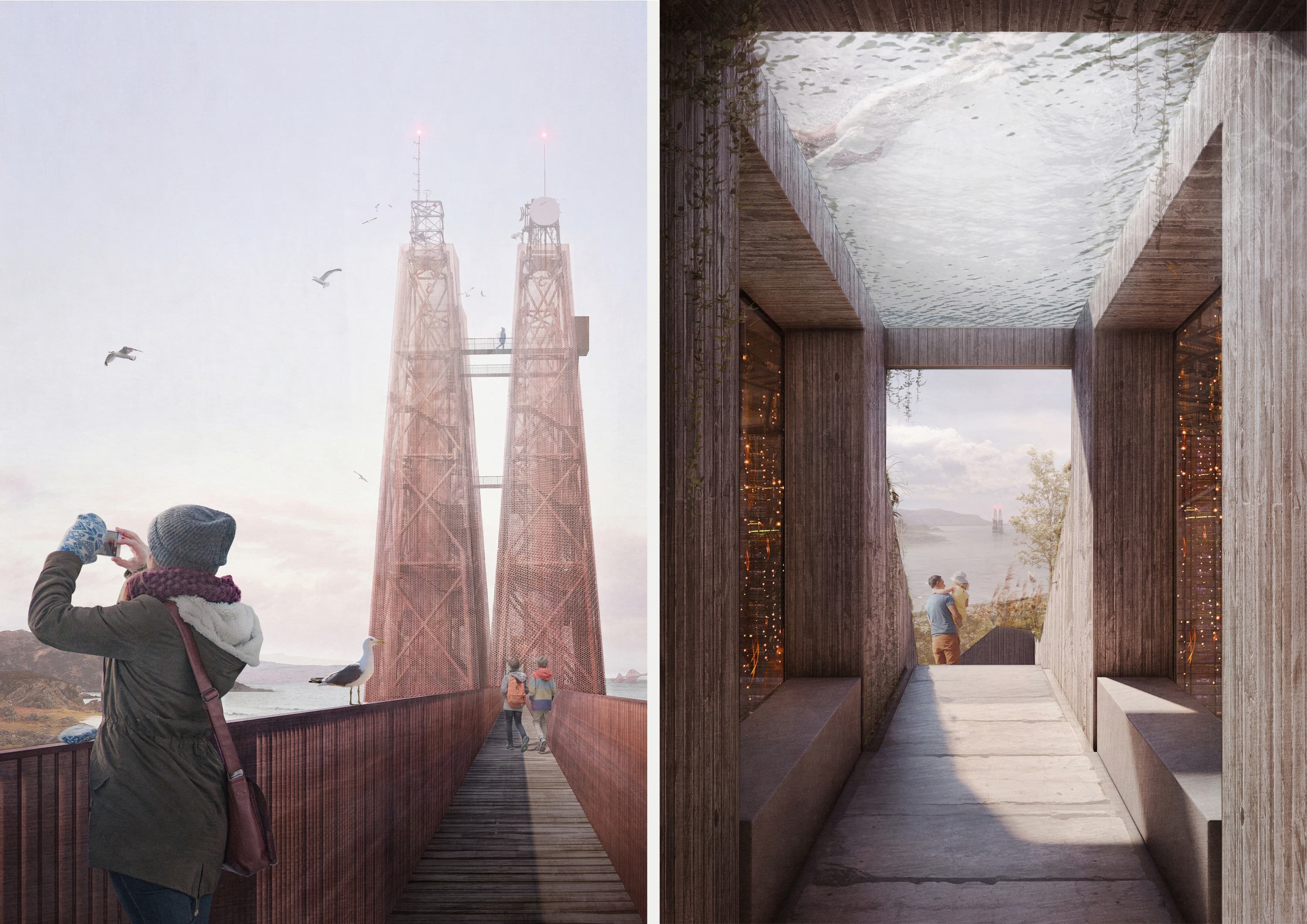Student awards 2021: interview with Tiia Partanen

At the A&DS and RIAS Student Awards for Architecture 2021, Tiia Partanen, from the University of Strathclyde, was awarded both the Andy MacMillan Drawing Award and the RIAS Rowand Anderson Silver Medal for Best 5th Year Student. We interviewed her to discuss her winning project - The Cloud Cooperative - and her plans for the future.
Tell us a little about yourself
I’ve just graduated from the Advanced Architectural Design (MArch) course at the University of Strathclyde, having moved here from Finland almost six years ago. I’ve been at Strathclyde for my entire time at university, and I spent a year in industry as a Part 1 Architectural Assistant in between my Bachelor’s and Master’s degrees. The 13 months I spent in practice were a huge motivating factor in pushing through those last two years at university.
"A beautifully balanced and seductive collection of images, graphics and text of many different types, each one succinctly adding to the clarity of the overall presentation."
About your project
My design thesis responded to the research document I created in the first semester of my 5th year, where I explored the topic of surveillance capitalism and how everything we do is monitored by browser cookies, geocaching, and phone location tracking. Basically, because the internet is free, you’ve been made into a product – your private data is being sold to advertisers and other parties who benefit from altering your behaviour.
When thinking of how I could respond to this architecturally, I started exploring the infrastructure of the internet – namely, the Cloud and the data centres that host it – imagining a future where people had control over their own data.
The design itself was meant to become a physical manifestation of the Cloud, where people could see and interact with this infrastructure which had previously been shrouded in mystery.
Studying during lockdown
It’s been weird, but not all that bad: I’ve felt very supported by my tutors and lecturers at my university, who have done their best to keep us engaged even through Zoom. Of course, it’s not ideal to do a design course with no face-to-face contact, as having your printed-out drawings sketched over during tutorials has always been such a huge part of advancing your design.
As a 5th year student, however, you’re expected to be at the point where you’re able to progress designs independently, just taking onboard verbal feedback and critiques. So, I tried to see the situation as more of a ‘thrown in the deep end’ sort of challenge, where I could really take control of my final individual design project.
"Rather than being overpowered by such a wide-ranging brief, the student created and beautifully presented well thought out and aesthetically rich designs for a range of structures and considered uses of associated technologies to provide a whole city framework to tackle the identified issues."
Studying architecture in Scotland
I’m super grateful to have had the opportunity to study in Scotland as an EU student, especially in a city like Glasgow where there’s such a vibrant art and architecture community. With so many great architecture practices involved in supporting the two architecture departments in the city, it’s meant that all our tutors have been knowledgeable, experienced architects.
I chose to study in Scotland not only because it’s a beautiful country with respected universities, but also due to it being included in the EU free tuition scheme - and I think it’s a real shame that that’s had to end because of Brexit.
What's next?
I was lucky enough to start working part-time at Collective Architecture, a Glasgow-based architecture practice this summer while writing my Master’s Thesis. Since graduating, I’ve been working for the same practice full-time as a Part 2 Architectural Assistant, working on socially oriented developments such as intermediate care facilities and affordable housing projects.
In the future, I would love to do further training in sustainable construction methods – maybe, eventually, becoming Passivhaus-certified. However, my last year at university has also sparked my interest in architectural conservation: after a brilliant course in the Theory of Conservation in my first semester, I ended up writing my Master’s Thesis on the conservation of an Alvar Aalto library in Vyborg, Russia.
Luckily, the practice I’m working for is super supportive about extra training – and already has quite a few Passivhaus-certified and conservation architects – so I could, potentially, pursue both goals.
Further information on other awards and the Andy McMillian Lecture
- The Last Straw: A Case for Reuse. Ratho Community Centre - Gergana Negovanska (Student Awards 2021 in Focus)
- Paradise Pomegranate: Walls, Wells & Selling - Rachel Dunne (Student Awards 2021 in Focus)
- The full results of this year’s A&DS and RIAS Architecture Awards are available here.
- As part of our annual student awards for architecture we host the Andy MacMillan Memorial Lecture. In 2021 this was given by Dr Jos Boys. You can watch it again here.
